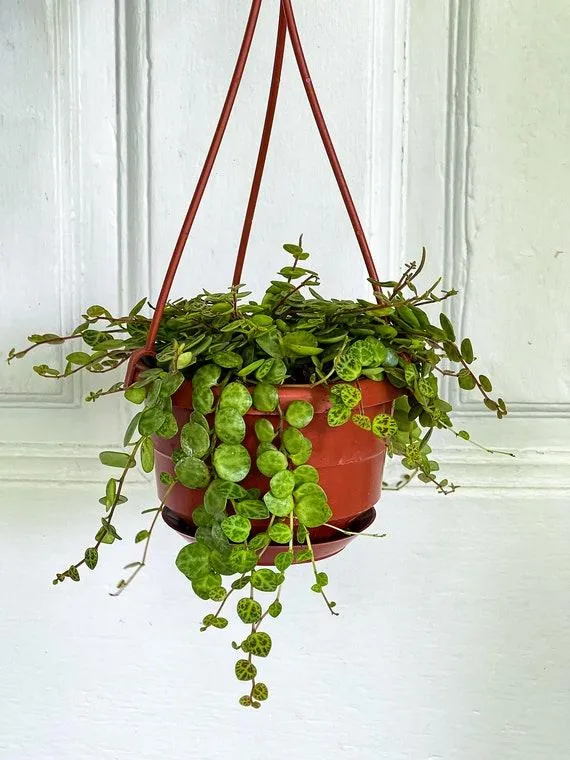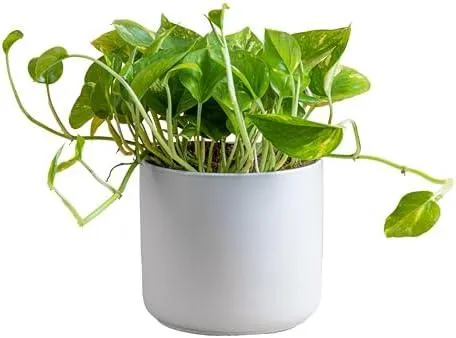A Guide to the Many Types of Hanging Plants
Whether you’re looking to add some greenery to your home or spruce up a bare wall, hanging plants are a beautiful way to decorate any space. Their vertical growth habit allows them to make use of areas that other planters can’t reach. In this article, we’ll explore the many varieties of hanging plants and their care requirements so you can pick the perfect ones for your environment.
Trailing Plants
Trailing plants have long, vine-like stems that spill over the sides of their containers. They’re great for hanging baskets and draping decoratively from shelves or walls. Some popular trailing plant options include:
- English ivy – This evergreen perennial is extremely hardy. It thrives in low to moderate light and tolerates various soil types. Ivy grows quickly to fill out empty spaces. Just be aware it can be invasive if not contained.
- Pothos – Also called devil’s ivy, pothos is an easy care trailing vine. It does well in low and bright indirect light. Water when the top inch of soil dries out. Pothos is toxic to pets if ingested.
- Spider plant – These fast growers produce baby plantlets at the ends of their longleaf stems. Spider plants handle low-light conditions and indifferent watering. Pinch off dead or leggy foliage to promote new growth.
In general, trailing plants enjoy sheltered spots protected from intense sun and drafty areas. Water them weekly or when the topsoil starts to dry. Fertilize during the growing season for lush foliage.

Climbing Plants
Unlike trailers, climbing plants use tendrils, hooks, or twining stems to grasp surfaces and ascend. While vines may seem like more work, their orderly growth up poles or structures produces gorgeous vertical gardens. Top climbers to try include:
- Philodendron – These tough tropicals thrive in medium to low indirect light. Look for heart-shaped Philodendron hederaceum or P. scandens with its small, glossy leaves. Water every 7-10 days.
- Climbing hydrangea – This gorgeous shrub blooms in summer with huge balls of lacecap flowers. Give it morning sun and afternoon shade with consistent moisture.
- Clematis – Over 300 varieties of clematis offer striking blooms in colors from purple to pink to white. Provide a trellis or archway for its twisting stems to wind around.
When planting climbers, make sure their roots remain in the pot by securing the vine to its support with garden ties. Fertilize monthly during growth spurts for abundant foliage and flowers.
Air Plants
Requiring hardly any soil whatsoever, air plants like Tillandsia thrive suspended in open air. Their unique cupped leaves soak up moisture and nutrients directly. Popular varieties include the fluffy ball-shaped T. ionantha and bountiful T. xerographica “pot of gold”.

To care for air plants, mist them gently a few times per week and soak in water for 10-20 minutes each week. They need good ventilation and won’t tolerate soggy conditions. Air plants also appreciate a wipe down of built-up minerals from their dips with a damp cloth. Their unusual shapes make air plants whimsical additions hung alone or in clusters.
Hanging Baskets
A timeless way to display multiple plants at once is in hanging baskets. select trailing plants, like petunias, verbena, or fuchsias, that cascading over the edges in layers of color. Check the drainage hole isn’t blocked and line the basket with sphagnum moss to retain moisture. Water daily until drainage and fertilize weakly every couple weeks.
From my experience, hanging baskets filled with a pleasing arrangement of trailing flowers is a sure way to bring beauty to a patio, deck, or balcony. I’ve also seen some really eye-catching combinations using trailing ivy paired with smaller air plants or succulents tucked in the foliage.

Succulents
Low-maintenance succulents work beautifully potted individually or together in hanging planters. Their thick fleshy leaves allow them to store water, so they’re very drought tolerant once established. Popular hanging succulent varieties to try include:
- Senecio – Often referred to as string of beads or string of pearls for its trailing rope-like stems dotted with round leaves.
- Echeveria – Rosette succulents come in many hues from orange to purple to green. Some flower too.
- Haworthia – These exotic-looking plants resemble miniature trees or flowers. Their zebra-striped leaves add whimsical charm.
When watering succulents, soak the soil completely then allow to dry fully before the next watering. Give them a nutrient boost a few times a year and protect from intense afternoon sunlight that can scorch tender leaves.
Orchids
Though requiring more precise growing conditions, many orchid species function beautifully suspended. Look for phalaenopsis or moth orchids sold in colorful blooms. Repot annually into loose, fast-draining media like cocofiber or bark. Keep the roots exposed and water only when they start to look silvery dry in bright, humid spots with no direct sun.

Fertilize regularly while in active growth and bloom. If new buds start to develop, reduce temperatures and light to prolong flowering. Hanging orchids certainly demand attention but reward you with their delicate, exotic blooms for many seasons.
Overall, hanging plants offer something unique depending on your space and lifestyle. Before choosing, consider light levels, watering needs, and how frequently you want to perform maintenance. But with the right variety and care, hanging gardens can thrive beautifully indoors or out.
I hope this guide has given you some ideas to spark your creativity! Let me know if you have any other questions as you start putting together your collection of hanging plants. With a little trial and error, you’ll be a pro in no time.
Types of Hanging Plants
| Plant | Light Needs | Watering | Care Level | Sizes |
|---|---|---|---|---|
| Pothos | Low | Moderate | Easy | Small to Large |
| Philodendron | Low to Medium | Moderate | Easy | Small to Large |
| Spider Plant | Medium | Moderate | Easy | Small |
| English Ivy | Low to Medium | Moderate | Easy | Small to Large |
| Purple Waffle Plant | Medium | Moderate | Easy | Small |
| Peacock Plant | Medium | Moderate | Easy | Small |
| Chinese Evergreens | Low | Moderate | Easy | Small to Medium |
FAQ
- What kinds of plants can be grown as hanging plants?
- There are basically many different types of plants that grow well when hung. Some popular choices are pothos, english ivy, philodendron, spider plants, air plants, succulents, and ferns. These plants tend to have long vines or stems that you can train to spill over the sides of pots.
- How do I care for hanging plants?
- Most hanging plants need the same care as other indoor plants, although their needs may be a bit different due to their growth habit. In general, make sure they get bright, indirect light and keep the soil evenly moist but not soaked. You’ll also want to occasionally remove dead or dying leaves and fertilize during the growing season. Oh, and don’t forget to water them from above so the whole plant gets a drink!
- What kind of pots work best for hanging plants?
- There are many types of pots that work well for hanging plants. Basket-style pots that are open on all sides allow air circulation and help vines trail over the edges nicely. Macramé hangers are a classic choice that add texture. You can also put plants in decorative ceramic or metal containers with drain holes. Just be sure to use a waterproof tray or saucer underneath to catch drips. Who knows, maybe kind of try making your own funky hangers with rope or repurposed items?
- How do I hang plants safely?
- It’s important to securely hang plants so they don’t come crashing down, which would be a real buzzkill. Make sure to use hooks or fixtures that can support the weight when watered. Consider the material – metal is generally stronger than plastic. And test that it’s firmly attached by giving the pot a gentle tug. You should also take into account where it will be hung regarding foot traffic and things below it. On the other hand, with the right hardware placed with care, your hanging plants can add beautiful greenery wherever you hang them.
- Will hanging plants be damaged outdoors?
- Most tropical hanging plants are actually suited for indoor conditions where temperatures remain warm and humidity levels are high. Putting them outside, especially in colder months, could be a surprising fail unless you live in an area with a very mild climate. The stress from outdoor temperatures, wind, and sun exposure may potentially harm or even kill plants not adapted to it. Perhaps keep your outdoor hanging to hardier types like certain succulents, english ivy, or tropicals in a protected area.
- What are some creative ways to display hanging plants?
- You can get awesomely inventive with how and where you showcase your hanging plant masterpieces. Try suspending planters from tree branches, arbors, or ceiling beams for an elevated garden vibe. Use multiple pots clustered together on a wide chain for maximum impact. Arrange trailing vines on walls, fences, or along stair railings to create living walls of greenery. And don’t forget about non-traditional display spots like above kitchen cabinets, on front porches, or in an outdoor shower. With a little creativity, your plants can serve as lovely decor almost anywhere!
